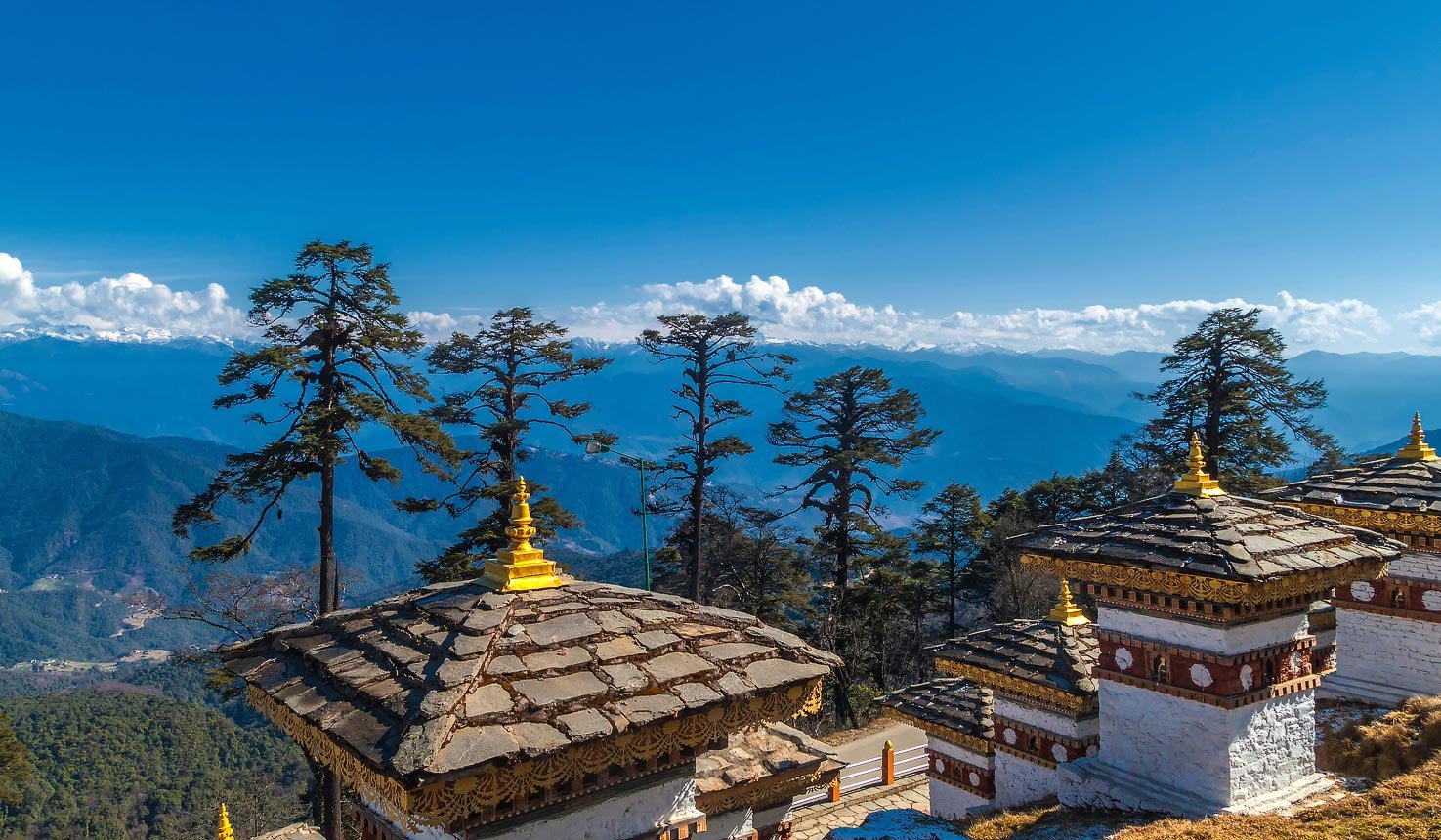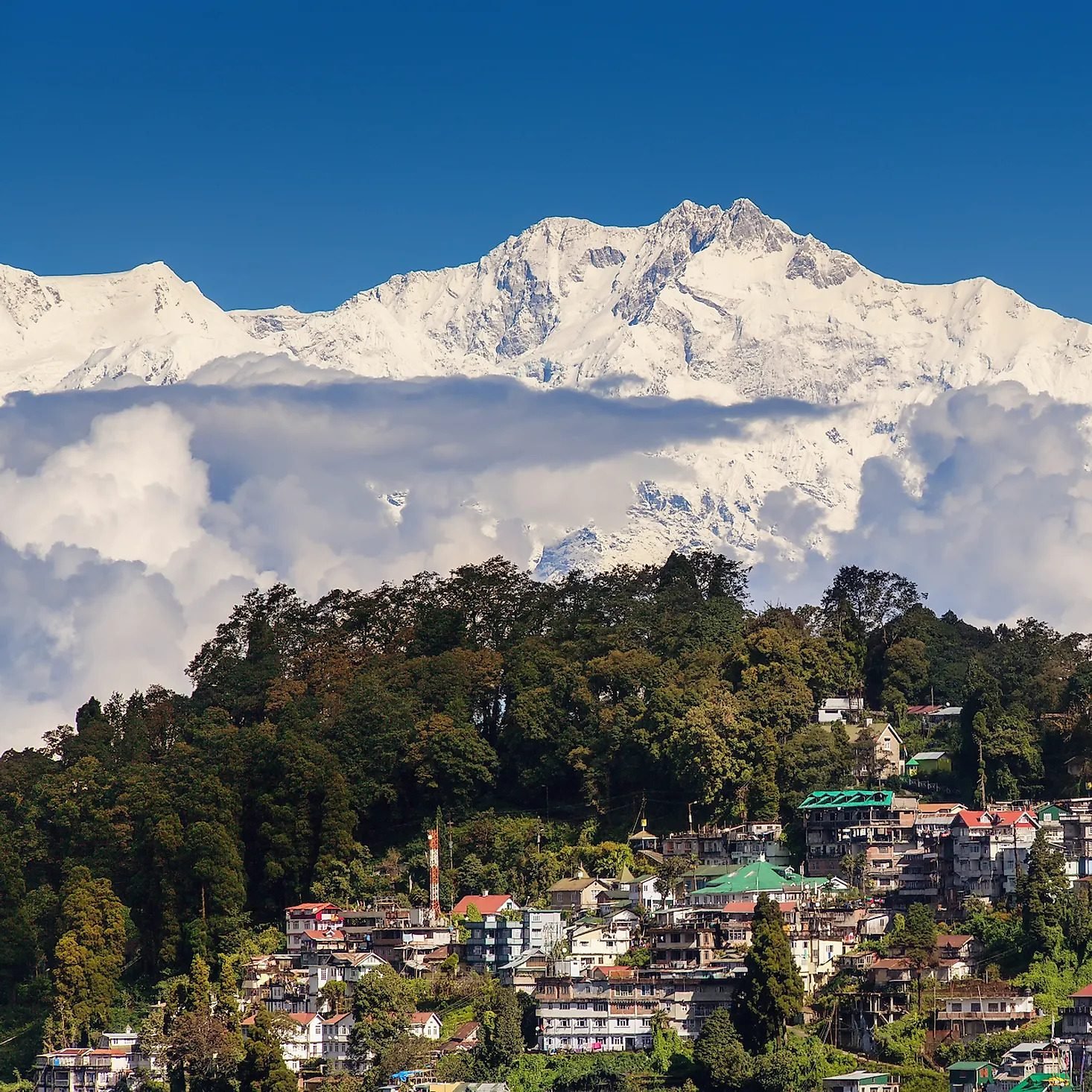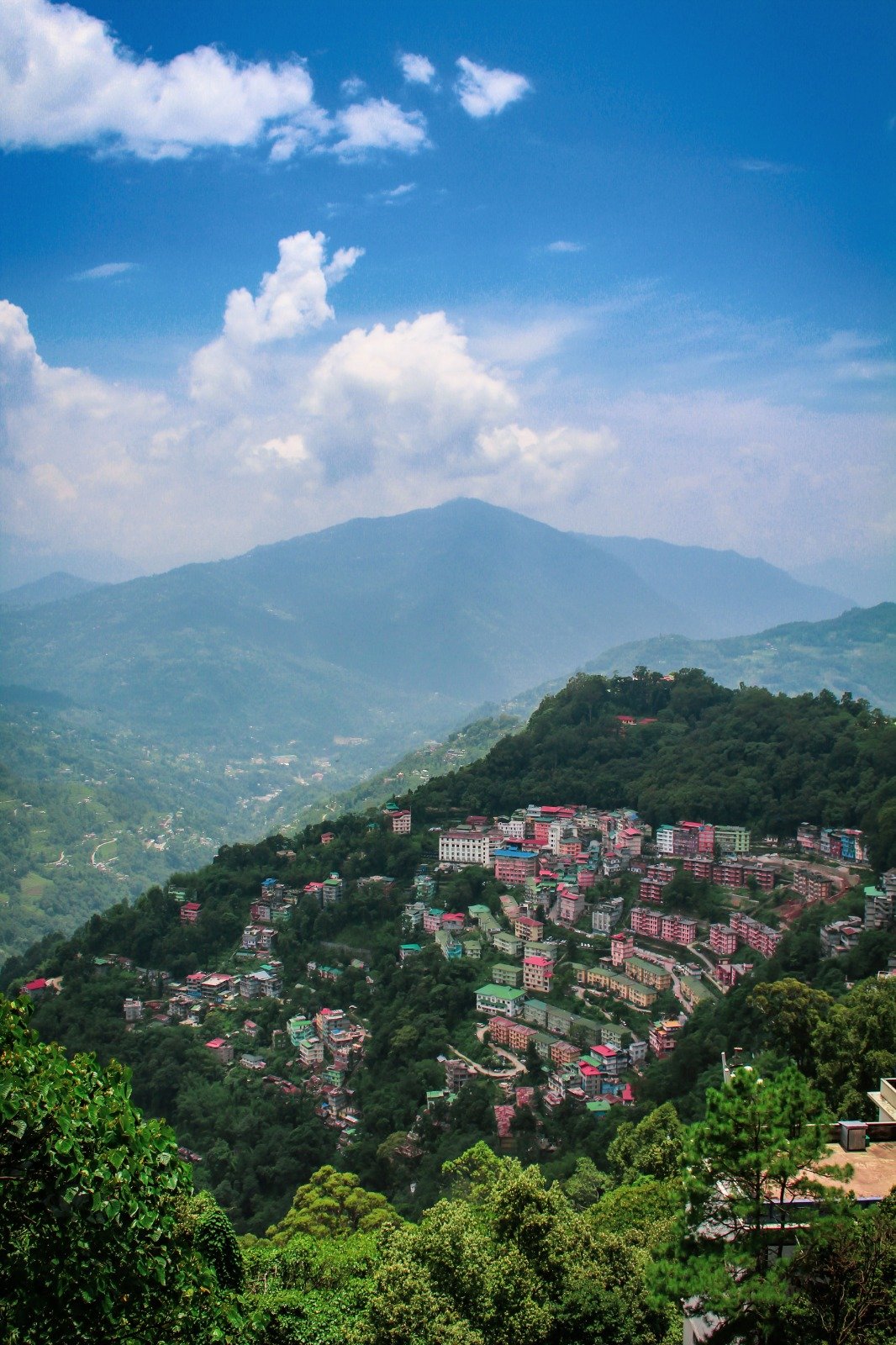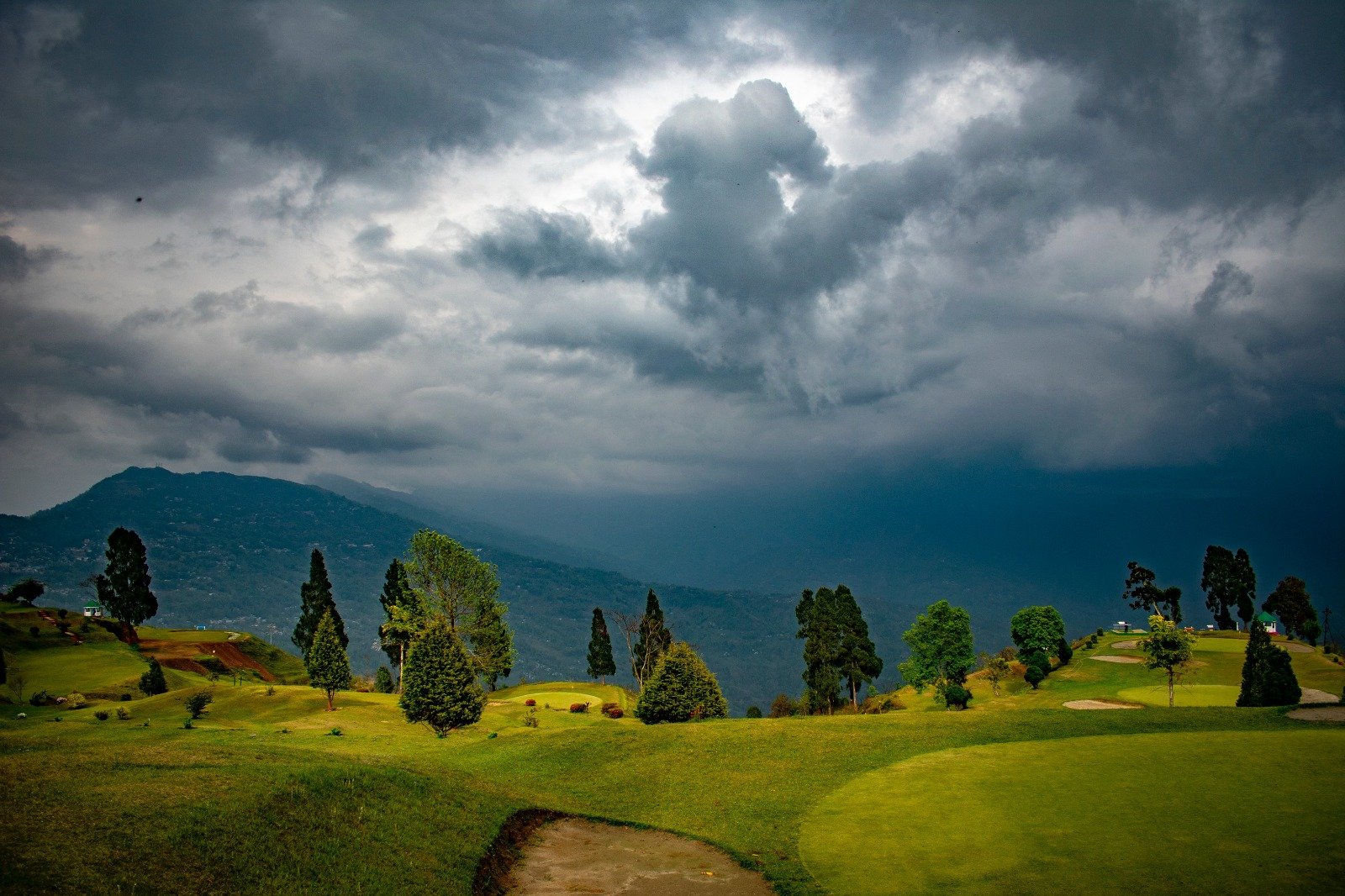PLACES TO VISIT IN THIS REGION
When Indians refer to “the South”, it’s usually Tamil Nadu they’re talking about. While Karnataka and Andhra Pradesh are essentially cultural transition zones buffering the Hindi-speaking north, and Kerala and Goa maintain their own distinctively idiosyncratic identities, the peninsula’s massive Tamil-speaking state is India’s Dravidian Hindu heartland. Traditionally protected by distance and the military might of the southern Deccan kingdoms, the region has, over the centuries, been less exposed to northern influences than its neighbours. As a result, the three powerful dynasties dominating the south – the Cholas, the Pallavas and the Pandyans – were able, over a period of more than a thousand years, to develop their own unique religious and political institutions, largely unmolested by marauding Muslims.
Places to visit in Tamil Nadu
The most visible legacy of this protracted cultural flowering is a crop of astounding temples, whose gigantic gateway towers, or gopuras, still soar above just about every town. It is the image of these colossal wedge-shaped pyramids, high above the canopy of dense palm forests, or against patchworks of vibrant green paddy fields, which Edward Lear described as “stupendous and beyond belief”. Indeed, the garishly painted deities and mythological creatures sculpted onto the towers linger long in the memory of most travellers.
The great Tamil temples, however, are merely the largest landmarks in a vast network of sacred sites – shrines, bathing places, holy trees, rocks and rivers – interconnected by a web of ancient pilgrims’ routes. Tamil Nadu harbours 274 of India’s holiest Shiva temples, and 108 are dedicated to Vishnu. In addition, five shrines devoted to the five Vedic elements (Earth, Wind, Fire, Water and Ether) are to be found here, along with eight to the planets, as well as other places revered by Christians and Muslims. Scattered from the pale orange crags and forests of the Western Ghats, across the fertile deltas of the Vaigai and Kaveri rivers to the Coromandel coast on the Bay of Bengal, these sites were celebrated in the hymns of the Tamil saints, composed between one and two thousand years ago. Today, so little has changed that the same devotional songs are still widely sung and understood in the region and it remains one of the last places in the world where a classical culture has survived well into the present.
The Tamils’ living connection with their ancient Dravidian past has given rise to a strong nationalist movement. With a few fleeting lapses, one or other of the pro-Dravidian parties has been in power here since the 1950s, spreading their anti-brahmin, anti-Hindi proletarian message to the masses principally through the medium of movies. Indeed, since Independence, the majority of Tamil Nadu’s political leaders have been drawn from the state’s prolific cinema industry.
With its seafront fort, grand mansions and excellence as a centre for the performing arts, the state capital Chennai is nonetheless a hot, chaotic, noisy Indian metropolis that still carries faint echoes of the Raj. However, it can be used as a base for visiting Kanchipuram, a major pilgrimage and sari-weaving centre, filled with reminders of an illustrious past.
Much the best place to start a temple tour is in nearby Mamallapuram, a seaside village that – quite apart from some exquisite Pallava rock-cut architecture – boasts a long and lovely beach. Further down the coast lies the one-time French colony of Puducherry, now home to the famous Sri Aurobindo ashram; nearby, Auroville has carved out a role for itself as a popular New Age centre. The road south from Puducherry puts you back on the temple trail, leading to the tenth-century Chola kingdom and the extraordinary architecture of Chidambaram, Gangaikondacholapuram, Kumbakonam and Darasuram. For the best Chola bronzes, however, and a glimpse of the magnificent paintings that flourished under Maratha rajas in the eighteenth century, travellers should head for Thanjavur. Chola capital for four centuries, the city boasts almost a hundred temples and was the birthplace of Bharatanatyam dance, famous throughout Tamil Nadu.
In the very centre of Tamil Nadu, Tiruchirapalli, a commercial town just northwest of Thanjavur, held some interest for the Cholas, but reached its heyday under later dynasties, when the temple complex in neighbouring Srirangam became one of south India’s largest. Among its patrons were the Nayaks of Madurai, whose erstwhile capital further south, bustling with pilgrims, priests, peddlers, tailors and tourists, is an unforgettable destination. The deeply rural area of Chettinadu to the northwest hides many delightful villages with splendid mansions, a fine break from the temple trail. Rameshwaram, on the long spit of land reaching towards Sri Lanka, and Kanyakumari at India’s southern tip are both important pilgrimage centres, and have the added attraction of welcome cool breezes and vistas over the sea.
While Tamil Nadu’s temples are undeniably its major attraction, the hill stations of Kodaikanal and Udhagamandalam (Ooty) in the west of the state are popular destinations on the well-beaten tourist trail between Kerala and Tamil Nadu. The verdant, cool hills offer mountain views and gentle trails through the forests and tea and coffee plantations. You can also spot wildlife in the teak forests of Mudumalai Wildlife Sanctuary and bamboo groves of Indira Gandhi Wildlife Sanctuary, situated in the Palani Hills.
Brief history of Tamil Nadu
Since the fourth century BC, Tamil Nadu has been shaped by its majority Dravidian population, a people of uncertain origins and physically quite different from north Indians. The influence of the powerful janapadas, established in the north by the fourth and third centuries BC, extended as far south as the Deccan, but they made few incursions into Dravidadesa (Tamil country). Incorporating what is now Kerala and Tamil Nadu, Dravidadesa was ruled by three dynasties: the Cheras, who held sway over much of the Malabar coast (Kerala), the Pandyas in the far south and the Cholas, whose realm stretched along the eastern Coromandel coast.
In the fourth century, the Pallava dynasty established a powerful kingdom centred in Kanchipuram. By the seventh century, the successors of the first Pallava king, Simhavishnu, were engaged in battles with the southern Pandyas and the forces of the Chalukyas, based further west in Karnataka. This was also an era of social development. Brahmins became the dominant community. The emergence of bhakti, devotional worship, placed temples firmly at the centre of religious life, and the inspirational sangam literature of saint-poets fostered a tradition of dance and music that has become Tamil Nadu’s cultural hallmark.
In the tenth and eleventh centuries, the Cholas experienced a profound revival, ploughing their new wealth into the construction of splendid and imposing temples. Subsequently, the Vijayanagars, based in Hampi (Karnataka), resisted Muslim incursions from the north and spread to cover most of south India by the sixteenth century. This prompted a new phase of architectural development, including the introduction of colossal gopuras. In Madurai, the Vijayanagar governors, Nayaks, set up an independent kingdom whose impact spread as far as Tiruchirapalli.
Simultaneously, the south experienced its first significant wave of European settlement. First came the Portuguese, followed by the British, Dutch and French. The Western powers soon found themselves engaged in territorial disputes, most markedly between the French, based in Pondicherry, and the British, whose stronghold since 1640 had been Fort St George in Madras. It was the British who prevailed, confining the French to Pondicherry.
As well as occasional rebellions against colonial rule, Tamil Nadu also saw anti-brahmin protests, in particular in the 1920s and 1930s. Independence in 1947 signalled the need for state boundaries, and by 1956 the borders had been demarcated on a linguistic basis. Thus in 1965 Madras Presidency became Tamil Nadu.
Since Independence, Tamil Nadu’s industrial sector has mushroomed. The state was a Congress stronghold until 1967, when the DMK (Dravida Munnetra Kazhagam), championing the lower castes and reasserting Tamil identity, won a landslide victory on a wave of anti-Hindi and anti-central government sentiment. Power has ping-ponged back and forth between the DMK and the breakaway party AIADMK ever since.
Best time to visit Tamil Nadu
Southern India can be visited year-round, although by far the best time to visit Tamil Nadu is between December and March, when the skies are mostly blue and the weather not as hot as it becomes from April to June, especially on the inland plains. Coastal areas, however, only ever vary a few degrees either side of 30°C but humidity levels are consistently high from April through September.
The main summer monsoon largely misses Tamil Nadu but the state does receive plenty of precipitation during the northeast monsoon season from October to early December, when violent cyclones can be a threat, sometimes causing floods and wreaking havoc with transport links.
During the hotter months, the hill stations of the Western Ghats provide welcome respite from the heat but they can be pretty chilly, at least at night, in the winter. The Christmas and New Year period gets busy and prices are higher then and for local festivals, of which the state has many.
Festivals in Tamil Nadu
- Pongal (mid-Jan)One of the most colourful and important Tamil festivals, celebrating the harvest, when thresholds are decorated with beautiful designs.
- Thiruvaiyaru Thyagaraja Aradhana (Jan)A five-day celebration of Carnatic classical music at Thiruvaiyaru, near Thanjavur, in honour of the great Carnatic composer-saint.
- Teppam Floating Festival (Jan/Feb)Worshippers take boats to the shrine in the middle of the great bathing tank in Madurai.
- Mamallapuram Dance Festival (Jan–Feb)Month-long classical dance performances against the wonderful backdrop of Arjuna’s Penance.
- Natyanjali Dance Festival (Feb/March)Five-day dance festival at the great temple in Chidambaram, with occasional offshoots in Kumbakonam and Thanjavur.
- Chithirai (April/May)Maybe the most important Madurai festival, celebrating the marriage of the principal deities of the great Meenakshi-Sundareshwarar Temple.
- King Rajaraja’s birthday (Oct)Vibrant ten-day affair when Thanjavur’s magnificent Brihadishwarar temple is decked out fully to celebrate its creator’s birthday.
- Kartigai Deepam (Nov/Dec)Statewide extension of Diwali, especially lively in Tiruvannamalai, where pilgrims circumambulate Arunachala.
- Chennai festival season (Dec–Feb)A series of Indian classical concerts and dance performances takes place at various venues throughout the city.
Eating in Tamil Nadu
As befits the heartland of the south, Tamil Nadu’s cuisine is typical of south India’s finest, especially the rice-based thali, known throughout the state simply as “meals”. This inexpensive lunchtime feast comprises a pile of rice, often served on a section of banana leaf, accompanied by a papad and a selection of dishes in tiny metal pots. These can vary but usually include the likes of sambhar (a spicy lentil soup) or rasam (a peppery tamarind juice soup), kootu (vegetable curried with more lentils), spicy potato fry, kosumari salad (grated carrot and coconut in lime juice), medu vadai (lentil dumpling), mango or lime pickle, and curd. Often there is a pot of a sweet concoction such as akkaravadisal (made with rice and lentils) thrown in for good measure. These meals are sometimes “limited”(i.e. a fixed amount) but more often “unlimited”, which means they keep coming round dolloping more on your plate (or leaf) until you beg them to stop.
One of the most celebrated types of Tamil cooking is Chettinad cuisine, renowned for its skilful use of aromatic spices such as tamarind, star aniseed, a lichen called kalpasi, fennel seeds, fenugreek and whole red chillies. Chettinad chicken and Chettinad fish are the dishes most commonly found on menus outside India. Another item seen throughout India that originated here is Chicken 65, so called because the combination of spices was said to preserve the meat for 65 days on long commercial sea voyages.
Northeast Tamil Nadu
Fazed by the heat and air pollution of Chennai, most visitors escape as fast as they can, heading down the Coromandel coast to India’s stone-carving capital, Mamallapuram. En route, it’s worth stopping at Dakshina Chitra, a folk museum around 30km south of Chennai, where traditional buildings from across south India have been beautifully reconstructed. Further inland, Kanchipuram is an important pilgrimage and silk-sari-weaving town from where you can loop southwest to the atmospheric temple town of Tiruvannamalai, situated at the base of the sacred mountain, Arunachala. Along the coast, you can breakfast on croissants and espresso coffee in the former French colony of Puducherry. A short way north, Auroville, the Utopian settlement founded by followers of the Sri Aurobindo Ghose’s spiritual successor, The Mother, provides a New Age haven for soul-searching Westerners and an economy for the local population.
Mamallapuram
Scattered around the base of a colossal mound of boulders 58km south of Chennai is the small seaside town and UNESCO World Heritage Site of Mamallapuram (formerly Mahabalipuram). From dawn till dusk, the rhythms of chisels chipping granite resound down its sandy lanes – evidence of a stone-carving tradition that has endured since this was a major port of the Pallava dynasty, between the fifth and ninth centuries. It is only possible to speculate about the purpose of much of the boulder sculpture, but it appears that the friezes and shrines were not made for worship at all, but rather as showcases for the talents of local artists. Due in no small part to the maritime activities of the Pallavas, their style of art and architecture had wide-ranging influence, spreading from south India as far north as Ellora, as well as to Southeast Asia.
Mamallapuram’s monuments divide into four categories: open-air bas-reliefs, structured temples, man-made caves and rathas (“chariots” carved in situ from single boulders to resemble temples or the chariots used in temple processions). The famous bas-reliefs, Arjuna’s Penance and the Krishna Mandapa, adorn massive rocks near the centre of the village, while the beautiful Shore Temple, one of India’s most photographed monuments, presides over the beach. Sixteen man-made caves and monolithic structures, in different stages of completion, are scattered through the area, but the most complete of the nine rathas are in a group, named after the five Pandava brothers of the Mahabharata.
Kanchipuram
Kanchipuram is situated on the Vegavathi River 70km southwest of Chennai. Ask any Tamil what Kanchipuram (aka “Kanchi”) is famous for, and they’ll probably say silk saris, shrines and saints – in that order. A dynastic capital throughout the medieval era, it remains one of the country’s seven holiest cities, sacred to both Shaivites and Vaishnavites, and among the few surviving centres of goddess worship in the south. Year round, pilgrims pour through for a quick puja stop on the Tirupati tour circuit and, if they can afford it, a spot of shopping in the sari emporia. For non-Hindu visitors, however, Kanchipuram holds less appeal. Although the temples are undeniably impressive, the town itself is unremittingly hot, with only basic accommodation and amenities. Some people prefer to visit Kanchipuram as a day-trip from Chennai or Mamallapuram, both of which are a two-hour bus ride away.
Puducherry
First impressions of Puducherry (Pondicherry, also often referred to simply as Pondy), the former capital of French India, can be unpromising. Instead of the leafy boulevards and pétanque pitches you might expect, its messy outer suburbs and bus stand are as cluttered and chaotic as any typical Tamil town. Closer to the seafront, however, the atmosphere grows tangibly more Gallic, as the bazaars give way to rows of houses whose shuttered windows and colourwashed facades wouldn’t look out of place in Montpellier. For anyone familiar with the British colonial imprint, the town can induce culture shock with its richly ornamented Catholic churches, French road names and policemen in De Gaulle-style képis, and boules played in the dusty squares. Many of the seafront buildings were damaged by the 2004 tsunami, but Puducherry’s tourist infrastructure remained intact.
The temples of Tamil Nadu
No Indian state is more dominated by its temples than Tamil Nadu, where temple architecture catalogues the tastes of successive dynasties and testifies to the centrality of religion in everyday life. Most temples are built in honour of Shiva, Vishnu and their consorts; all are characterized not only by their design and sculptures, but also by constant activity: devotion, dancing, singing, pujas, festivals and feasts. Each is tended by brahmin priests, recognizable by their dhotis (loincloths), a sacred thread draped over the right shoulder, and marks on the forehead. One to three horizontal (usually white) lines distinguish Shaivites; vertical lines (yellow or red), often converging into a near-V shape, are common among Vaishnavites.
Dravida architecture
Dravida, the temple architecture of Tamil Nadu, first took form in the Pallava port of Mamallapuram. A step-up from the cave retreats of Hindu and Jain ascetics, the earliest Pallava monuments were mandapas, shrines cut into rock faces and fronted by columns. This sculptural skill was transferred to freestanding temples, rathas, carved out of single rocks and incorporating the essential elements of Hindu temples: the dim inner sanctuary, the garbhagriha, capped with a modest tapering spire featuring repetitive architectural motifs.
Chola architecture
Pallava themes were developed in Karnataka by the Chalukyas and Rashtrakutas, but it was the Shaivite Cholas who spearheaded Tamil Nadu’s next architectural phase, in the tenth century. In Thanjavur, Rajaraja I created the Brihadishvara Temple principally as a status symbol; its proportions far exceed any attempted by the Pallavas. Set within a vast walled courtyard, the sanctuary, fronted by a small mandapa, stands beneath a sculpted vimana that soars more than 60m high. Most sculptures once again feature Shiva, but the gopuras each side of the eastern gateway to the courtyard were an innovation, as were the lions carved into the base of the sanctuary walls, and the pavilion erected over Nandi in front of the sanctuary.
Vijayanagar architecture
By the time of the thirteenth-century Vijayanagar kings, the temple was central to city life, the focus for civic meetings, education, dance and theatre. The Vijayanagars extended earlier structures, adding enclosing walls around a series of prakaras, or courtyards, and erecting freestanding mandapas for use as meeting halls, elephant stables, stages for music and dance, and ceremonial marriage halls (kalyan mandapas). Raised on superbly decorated columns, these mandapas became known as thousand-pillared halls. Tanks were added, doubling as water stores and washing areas, and used for festivals when deities were set afloat in boats.
Under the Vijayanagars, the gopuras were enlarged and set at the cardinal points over the high gateways to each prakara, to become the dominant feature. Madurai is the place to check out Vijayanagar architecture.
Central Tamil Nadu: the Chola heartland
Continuing south of Puducherry along the Coromandel coast, you enter the flat landscape of the Kaveri (aka Cauvery) Delta, a watery world of canals, dams, dykes and rivulets that has been intensively farmed since ancient times. Just 160km in diameter, it forms the verdant rice-bowl core of Tamil Nadu, crossed by more than thirty major rivers and countless streams. The largest of them, the River Kaveri, known in Tamil as Ponni, “The Lady of Gold” (a form of the Mother Goddess), is revered as a conduit of liquid shakti, the primordial female energy that nurtures the millions of farmers who live on her banks and tributaries. The landscape here is one endless swathe of green paddy fields, dotted with palm trees and little villages of thatched roofs and market stalls; it comes as a rude shock to land up in the hot and chaotic towns.
This mighty delta formed the very heartland of the Chola empire, which reached its apogee between the ninth and thirteenth centuries, an era often compared to classical Greece and Renaissance Italy both for its cultural richness and the sheer scale and profusion of its architectural creations. Much as the Cholas originally intended, every visitor is immediately in awe of their huge temples, not only at cities such as Chidambaram, Kumbakonam and Thanjavur, but also out in the countryside at places like Gangaikondacholapuram, where the magnificent temple is all that remains of a once-great city. Exploring the area for a few days will bring you into contact with the more delicate side of Chola artistic expression, such as the magnificent bronzes of Thanjavur.
Gangaikondacholapuram
Devised as the centrepiece of a city built by the Chola king Rajendra I (1014–42) to celebrate his conquests, the magnificent Brihadishwara Temple (a replica of the Tanjore temple) stands in the tiny village of Gangaikondacholapuram in Ariyalur District, 35km north of Kumbakonam. The tongue-twisting name means “the town of the Chola who took the Ganges”. Under Rajendra I, the Chola empire did indeed stretch as far as the great river of the north, an unprecedented achievement for a southern dynasty. Aside from the temple and the rubble of Rajendra’s palace, 2km east at Tamalikaimedu, nothing of the city remains. Nonetheless, this is among the most extraordinary archeological sites in south India, outshone only by Thanjavur, and the fact that it’s devoid of visitors most of the time gives it a memorably forlorn feel. Note there are scarcely any facilities beyond a couple of stalls, so avoid getting stuck here when the temple is closed.
Kumbakonam
Sandwiched between the Kaveri (Cauvery) and Arasalar rivers, 74km southwest of Chidambaram and 38km northeast of Thanjavur, is Kumbakonam. Hindus believe this to be the place where a water pot (kumba) of amrita – the ambrosial beverage of immortality – was washed up by a great deluge from atop sacred Mount Meru in the Himalayas. Shiva, who just happened to be passing through in the guise of a wild forest-dwelling hunter, for some reason fired an arrow at the pot, causing it to break. From the shards, he made the lingam that is now enshrined in Kumbeswara Temple, whose gopuras today tower over the town, along with those of some seventeen other major shrines. A former capital of the Cholas, who are said to have kept a high-security treasury here, Kumbakonam is the chief commercial centre for the Thanjavur region. The main bazaar, TSR Big Street, is especially renowned for its quality costume jewellery.
The main reason to stop in Kumbakonam is to admire the exquisite sculpture of the Nageshwara Swami Shiva Temple, which contains the most refined Chola stone carving still in situ. The town also lies within easy reach of the magnificent Darasuram and Gangaikondacholapuram temples, both spectacular ancient monuments that see very few visitors. The village of Swamimalai, just a bike ride away, is the state’s principal centre for traditional bronze casting.
Thanjavur
One of the busiest commercial towns of the Kaveri Delta, Thanjavur (aka Tanjore), 55km east of Tiruchirapalli and 35km southwest of Kumbakonam, is nevertheless well worth a visit. Its history and treasures – among them the breathtaking Brihadishwara Temple, Tamil Nadu’s most awesome Chola monument – give it a crucial significance to south Indian culture. The home of the world’s finest Chola bronze collection, it holds enough of interest to keep you enthralled for at least a couple of days plus it’s a good base for short trips to nearby Gangaikondacholapuram, Darasuram and Swamimalai.
Darasuram
The Airavateshwara Temple, built by King Rajaraja II (c.1146–73), stands in the village of Darasuram. This superb, if little-visited, Chola monument ranks alongside those at Thanjavur and Gangaikondacholapuram; but while the others are grandiose, emphasizing heroism and conquest, this is far smaller, exquisite in proportion and detail and said to have been decorated with nitya-vinoda, “perpetual entertainment”, in mind. At this temple, Shiva is called Airavateshwara because he was worshipped here by Airavata, the white elephant belonging to Indra, king of the gods.
Darasuram’s finest pieces of sculpture are the Chola black-basalt images adorning wall niches in the mandapa and inner shrine. These include images of Nagaraja, the snake-king, with a hood of cobras, and Dakshinamurti, the “south-facing” Shiva as teacher, expounding under a banyan tree.
Chola bronzes
Originally sacred temple objects, Chola bronzes are the only art form from Tamil Nadu to have penetrated the world art market. The most memorable bronze icons are the Natarajas, or dancing Shivas. The image of Shiva, standing on one leg, encircled by flames, with wild locks caught in mid-motion, has become almost as recognizably Indian as the Taj Mahal.
The principal icons of a temple are usually stationary and made of stone. Frequently, however, ceremonies require an image of the god to be led in procession outside the inner sanctum, and even through the streets. According to the canonical texts known as Agamas, these moving images should be made of metal. Indian bronzes are made by the cire-perdue (“lost wax”) process, known as madhuchchishtavidhana in Sanskrit. Three layers of clay mixed with burned grain husks, salt and ground cotton are applied to a figure crafted in beeswax, with a stem left protruding at each end. When that is heated, the wax melts and flows out, creating a hollow mould into which molten metal – a rich five-metal alloy (panchaloha) of copper, silver, gold, brass and lead – can be poured through the stems. After the metal has cooled, the clay shell is destroyed, and the stems filed off, leaving a unique completed figure, which the caster-artist, or sthapathi, remodels to remove blemishes and add delicate detail.
Those bronzes produced by the few artists practising today invariably follow the Chola model; the chief centre is now Swamimalai. Original Chola bronzes are kept in many Tamil temples, but as the interiors are often dark it’s not always possible to see them properly. Important public collections include the Royal Palace Compound at Thanjavur, the Government Museum at Chennai and the National Museum, New Delhi.
Tiruchirapalli (Trichy) and around
Tiruchirapalli – more commonly referred to as Trichy – stands in the plains between the Shevaroy and Palani hills, just under 100km north of Madurai. Dominated by the dramatic Rock Fort, it’s a sprawling commercial centre with a modern feel. Most of its business is in the southern Trichy Junction district, where the bazaars, immediately north of the Junction, heave with locally made cigars, textiles and fake diamonds, made into inexpensive jewellery and sewn into dance costumes. Head north along Big Bazaar Road and you’re confronted by the dramatic profile of the Rock Fort, topped by the seventeenth-century Vinayaka (Ganesh) Temple. There are several British churches dotted around the town, the most notable of which is Our Lady of Lourdes, west of the Rock Fort, which is modelled on the basilica of Lourdes.
North of the fort, the River Kaveri marks a wide boundary between the crowded business districts and the somewhat more serene temples beyond the river. The spectacular Ranganathaswamy Temple in Srirangam, 6km north of central Trichy, is so large it holds much of the village within its courtyards. Also north of the Kaveri is the elaborate Sri Jambukeshwara Temple.
Chettinadu
The tranquil rural area known as Chettinadu occupies a swathe of land about equidistant from Madurai to the southwest and Trichy and Thanjavur to the north. It is the traditional home of the Chettiars, also known as the Nagarathas, a merchant community who date back to the Chola empire and came to prominence in the nineteenth century, when they played an important role in the British trade routes to countries on the Subcontinent and Southeast Asia. The great wealth accumulated during this period allowed them to build lavish mansions and notable temples in their 96 villages, of which 72 remain, plus the larger towns of Karaikudi and Pudukottai. These urban areas grew from villages and provide the gateway to the area, especially the former.
It would take days if not weeks to explore the area thoroughly, so it is best to base yourself at one of the most picturesque villages, such as Kanadukathan, 15km north of Karaikudi, en route to Pudukottai. Many of the mansions here and in other villages fell into disrepair when their owners emigrated but have recently been beautifully refurbished as heritage hotels, often by returning Chettiars themselves. Chettinadu is also renowned for its cuisine, with examples of it often to be found on Indian menus worldwide.




